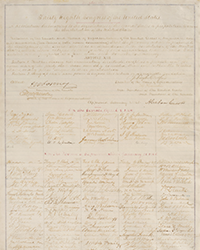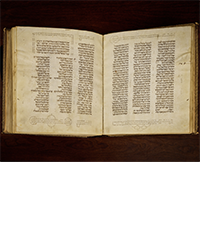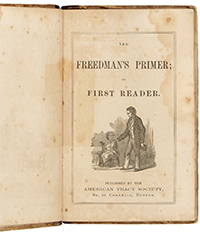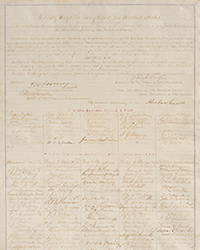Zephyr Used & Rare Books has issued a catalogue of Wonders from the Curious to the Mundane. And that is what you will find! It's hard to otherwise explain what is in this catalogue as it is a mix of different, but fascinating items. For example, for those of us who love old cars, there are brochures and dealer promotional material for some very old models, several of which no longer exist. Do you remember the Cartercar? I don't, but it's here. Old cars is just one of many subjects, which range from African Americana to travels to some obscure old novels. Or, how about the adventures of a Royal Canadian Mounted Policeman "in the largest and loneliest police district in the world," Baffin Island? Does anyone live there, and if so, aren't they too busy keeping warm to commit crimes? This sounds both curious and mundane. Here are a few other selections from this catalogue, with something of a bias of one who loves old cars.
We begin with an illustrated color brochure for the Imperator: the world's largest ship, embodying maximum comfort and safety for all, 50,000 tons, Length, 919 feet... 50,000 tons? Why didn't this thing sink? This brochure was published in 1913, when the German luxury liner was new. It even outstripped in size the late Titanic. Indeed, since the ship was top-heavy, they had to pour an extra 2,000 tons of cement into the bottom as ballast. Still she floated. Unfortunately, the timing of this ship was terrible. Soon, World War I broke out, forcing the Hamburg-American line to keep her in port for safety. After the war, the Germans were required to surrender the ship to Britain as war reparations. It went into service for Cunard Lines until retired from passenger service in 1938. She was demolished in 1946. Item 149. Priced at $275.
If you've tried "everything" to cure your illness without success, maybe you haven't. How about chromotherapeutics? Not chronotherapeutics, that is a different thing. Chromotherapeutics somehow uses colors and vibrations to cure your illnesses. I'm not sure how, but the answer can be found in Ernest Stevens' Vibrations: their principles, light and colors, their uses, essays, lessons, health hints and flash-lights... This book was printed by the Stevens Light and Color Research Studios of San Francisco in 1920-21. Even then, San Francisco was ahead of its time. The therapy was pretty if not effective. Item 15. $295.
Next we have the brochure for the Cartercar. The Car With the Gearless Transmission. The gearless transmission allowed for "a thousand speeds," rather than a few set gear ratios. The company was formed in 1905 by Byron J. Carter, who split from Jackson Automobile in a disagreement over transmissions. At first, sales grew handsomely. Unfortunately, in 1908, Byron Carter was injured when the crank shaft used back then to start cars kicked back, striking him in the jaw. He developed gangrene and died. The following year, General Motors, in a buying spree, purchased Cartercar. They were intrigued by its transmission, but sales never developed as hoped. It was discontinued in 1915. Item 33, published in 1914. $295.
The Rickenbacker had no more success than the Cartercar despite its famous name. It was founded by America's leading World War I flying ace, Eddie Rickenbacker, a name still well known. His car is not. It began production in 1922, and in 1923, it was the first car to feature four-wheel brakes. Today, all cars have them, but at the time, braking of two wheels was deemed sufficient. The cars were noted to be advanced for their time, but the price was too high for the market. The company folded in 1927. Item 45 is a brochure for the Rickenbacker Six, A Car Worthy Of Its Name. It was published in 1922. $175.
So where could you park your Rickenbacker when you went to Chicago? Westinghouse had the answer. Evidently, even by 1932, cities had their problems providing enough parking spaces. Westinghouse's solution was the Westinghouse Vertical Parking Machine. This was a much finer invention than today's parking garages where you drive up ramps to higher floors filled with parking spaces. With the parking machine, you drove into your slot, exited your car, and paid the fare. The vertical parking machine would elevate your car out of the way. However, it didn't function so much like an elevator as like a ferris wheel, except instead of being round, it had up and down sides with a short turning ratio at top and bottom. The result was that it could hold 48 cars in the same amount of space as just six parking places. Westinghouse even offered a version that was coin operated. Other than the one in Chicago, and at Westinghouse's facilities in Pittsburgh, there is no sign that any others were built. The one in Chicago operated successfully, but the idea never caught on, soon to be replaced by conventional parking garages. Item 25 is Westinghouse vertical parking machine. A practical solution of the parking problem and an aid to traffic congestion... Published in 1932, it will tell you all about this amazing device. $275.
Item 157 answers the age-old question, how do you eat canned salmon? The answer is not "reluctantly." Rather, the answer can be found in the Salmon Cook Book: how to eat canned salmon. This book provides various recipes, sauces to enhance (or mask) the flavor, along with illustrations of salmon fishing, Alaska natives, polar bears, boat building, and more. It was published by the Alaska Packers Association in time for the Panama Pacific International Exposition of 1915 in San Francisco. And, if the stuff made you ill, it was just a short trip from there to the Stevens Light and Color Research Studios for some chromotherapy. $200.
Zephyr Used & Rare Books may be reached at 360-695-7767 or zephyr@worldaccessnet.com.









